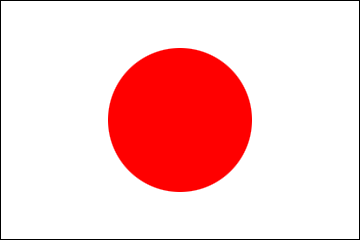Article by Mr. Muhannad M. Hameed, Co-founder of The Station, about his trip to Japan (Invited by the Government of Japan between the 25th of February and 3rd of March).
2019/7/22
Japan, the country that never came up to my mind that I might visit, Far East, one of the top countries in the world, childhood dream, and the source of motivational legend superheroes.
My first days in Japan were in Tokyo, long hours I spent walking in the streets trying to explore this fantastic city. Heavy traffic, millions of people getting into the metro in seconds, system and system and system, a system that manage every single detail in everyday life.
Talking about the details, the Japanese are anxious about more information and literally in everything they do. Anyone who did not use to deal with this much of details (like me) can quickly notice that, in the statues in public parks, fences of the emperor palace, buildings architecture, streets designs, and the list is countless.
We moved to Kyoto, the former capital of Japan for practicing the ritual tea ceremony. In the beginning, I was wondering why this tea ceremony essential to be put in the program? What makes it different than any other tea? Let me tell you something, it's a totally extraordinary experience for any foreigner to have in Japan. How is that?
The traditional Japanese tea ceremony is a symbol of peace, harmony, and happiness. It's a spiritual experience that demonstrates respect through etiquette and grace, which are integral facets of Japanese culture. The tea ceremony also promotes social bonding and provides an occasion for everyone to relax and enjoy themselves away from the worries of the outside world.
Again to the details, in Japan, matcha tea ritual requires a series of precise hand movements and graceful choreography, which often requires hours of preparation. Hanging scrolls that feature famous quotes and well-known proverbs are conventional and offer thoughtful wisdom and advice to the participants. Simple flower arrangements may also be used.
Then Nara, the historical capital of Japan immersed in history, the city of temples, the town where Buddhism started in Japan. The beautiful thing about Nara, compared to Kyoto, is that the main places of interest are reasonably concentrated and can easily be reached by train and explored on foot and with distance between them and urban Nara. In the rural areas outside of Nara city are many ancient tombs, ruins and other historical relics. Many of these can be reached by train from Nara Station.
We visited one of the seven magnificent Buddhist temples and discovered the history and culture of Nara. A great opportunity to also experience Zazen meditation with monk guide. Gangoji temple is known as one of the seven magnificent temples and one of the oldest Buddhist temples of Japan. It is a UNESCO World Heritage Site and can lay claim to being one of the most ancient temples in Japan.
Zazen is considered one of the many methods from eastern spiritual traditions for attaining objectives such as mind/body health, skillful social behavior, a peaceful mind, or the resolution of various problems in life. "In Zazen, we move from the head to the heart and into our Buddha-nature." I cannot forget what a profound spiritual experience this was .
The last step in Japan was Hiroshima, upon arrival in Hiroshima for the first time, so much hurt and pain as we strolled through the park with different statues/erected features/folded cranes reminding us of the event on 6 Aug 1945!
Standing at the Cenotaph, you can see the Atomic Bomb Dome framed by the arch. What a moving site. Ladies put fresh flowers on the Cenotaph every day, in memory of all those who lost their lives.
It is hard to imagine that on 6 Aug 1945, at 8:15 over 90,000 lives were lost in a split second. A very moving place where you can sit and reflect on the events, and think how lucky you are.
